It’s Been 25 Years Since 2CV Production Ceased
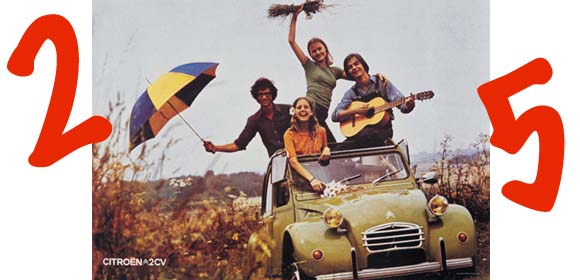
The last Citroën 2CV, known as the “Tin Snail” for its distinctive shape and lackluster power, rolled off the production line at the company’s plant in Mangualde, Portugal at four o’clock on the afternoon of July 27, 1990. Since its debut in 1948, a total of 5,114,959 2CVs had been produced worldwide.
The French engineer and industrialist André Citroën converted his munitions plant into an automobile company after World War I; beginning in 1919, it was the first automaker to mass-produce cars outside of the United States. As in Germany (the Volkswagen Beetle), Italy (the Fiat 500) and Britain (Austin Mini), the rise of mass car ownership in France in the 1930s led to a demand for a light, economical “people’s car,” which Citroën answered in the post-World War II years with the 2CV. The company actually began testing the 2CV before the war but kept the project under wraps when war broke out; the original production model was only discovered by chance in the late 1960s.
 The original 2CV, TPV – Très Petite Voiture (Very Small Car).
The original 2CV, TPV – Très Petite Voiture (Very Small Car).
When Citroën finally unveiled the car at the 1948 Paris Motor Show, it was an immediate success: At one point, the waiting time to buy one was five years.
The 2CV (“Deux Chevaux Vapeur” in French, or “two steam horses,” a reference to France’s policy of taxing cars based on their engine output) was a trailblazer among other small cars of its era. Its innovations included a sophisticated suspension system, front-wheel drive, inboard front brakes, a lightweight, air-cooled engine and a four-speed manual transmission. Its front and rear wings, doors, bonnet, fabric sunroof and trunk lid were all detachable. The 2CV’s endearingly unfashionable form joined the Eiffel Tower as a quintessential symbol of France in popular culture. Citroën released a 2CV van in 1951 and a luxury version, the 2CV AZL, in 1956. New models came out over the years, including the 2CV4 and 2CV 6, capable of reaching speeds above 100 kilometers per hour, in 1970; and the popular “Charleston” model in 1981. That same year, Roger Moore–playing the super spy James Bond in “For Your Eyes Only”–drove a bright yellow, 2CV – modified for high performance in the movie by swapping out the standard 2 cylinder air-cooled engine with a 4 cylinder version found in the Citroën GS, evading his pursuers (in Peugeots) in the requisite Bond movie high-speed car chase.
By the late 1980s, however, consumers were no longer wild about the 2CV’s quirky, antiquated design. This fact, combined with poor performance according to crash-testing, anti-pollution standards and the fact that assembly was non-automated for the most part and therefore costly, led to the Tin Snail’s demise. In 1988, production moved from France to Portugal, and the last 2CV was produced two years later.
However its charm lives on with a very devout following. Tomorrow is the 21st International Meeting of 2CV Friends kicks off in Tourin, Poland where over a thousand 2CVs will attend for camping as fun festivities. Immensely fun to drive, simple to maintain and so oddly charming in its own right, the 2CV is clearly the most popular Citroën model among the club members of Citroënvie.
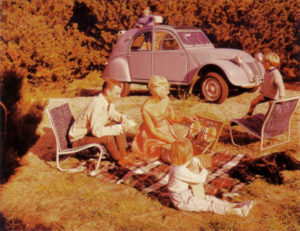
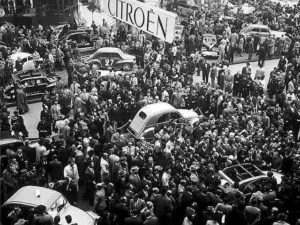
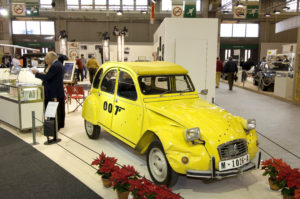

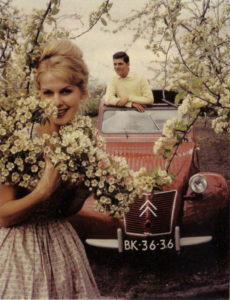

We have loved 1971 adventures in Citroen 2CV in the New Hebrides, Pacific Ocean